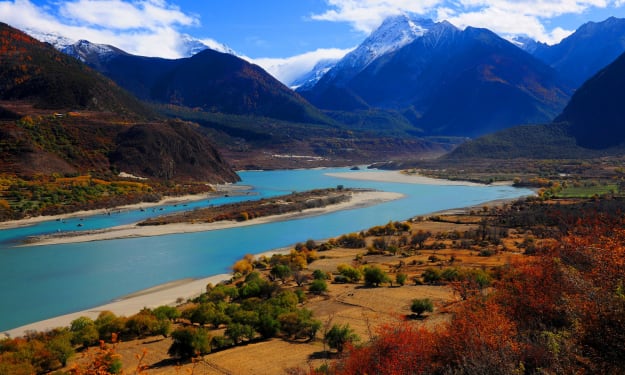
The Devastating Effects of Heavy Rainfall on Metropolitan Cities
In recent years, metropolitan cities across the globe have experienced a significant increase in heavy rainfall events, leading to severe consequences. These torrential downpours, often intensified by climate change, pose numerous challenges and risks to the infrastructure, environment, and residents of these urban centers. This article delves into the detrimental effects of heavy rainfall on metro cities, highlighting the urgent need for adaptive measures and sustainable urban planning.
Infrastructure Overload:
When heavy rainfall inundates metropolitan areas, the existing infrastructure designed to handle average precipitation rates can quickly become overwhelmed. Drainage systems, stormwater management networks, and sewage systems struggle to cope with the massive influx of water, leading to widespread flooding. Roads, bridges, and tunnels may become impassable, disrupting transportation networks and causing significant economic losses.
Property Damage and Displacement:
Flooding resulting from heavy rainfall can wreak havoc on residential and commercial properties in metro cities. Homes and businesses located in flood-prone areas are particularly vulnerable. Rising water levels can lead to structural damage, destruction of personal belongings, and even render buildings uninhabitable. Displacement of residents due to flood damage adds further strain on local authorities and emergency services.
Health and Sanitary Risks:
Heavy rainfall and subsequent flooding pose serious health risks to city dwellers. Contaminated water can infiltrate drinking water supplies, leading to the spread of waterborne diseases. Stagnant water provides a breeding ground for mosquitoes and other disease-carrying vectors, increasing the likelihood of outbreaks. Moreover, the damage to sanitation systems can further exacerbate public health concerns, making it difficult to maintain proper hygiene and sanitation standards.
Environmental Impacts:
Heavy rainfall events in metro cities can have detrimental effects on the local environment. Increased runoff from urban surfaces carries pollutants, debris, and sediment into rivers, lakes, and oceans, causing water pollution and threatening aquatic ecosystems. Additionally, the loss of green spaces and vegetation due to urbanization exacerbates the risk of soil erosion and decreases the city's ability to absorb and retain excess rainfall.
Economic Consequences:
The economic toll of heavy rainfall on metro cities is substantial. Businesses face disruptions in operations, damage to inventory, and loss of revenue due to flooded premises and inaccessible transport routes. Insurance claims skyrocket, placing financial burdens on individuals and insurers. Government expenditure on emergency response, repairs, and infrastructure upgrades strains public budgets, diverting resources from other essential services and developmental projects.
Impact on Vulnerable Communities:
Vulnerable populations, including low-income communities, marginalized groups, and informal settlements, bear the brunt of heavy rainfall in metro cities. These communities often lack adequate infrastructure and resources to withstand extreme weather events. Their limited access to essential services and information aggravates the impact of flooding, resulting in heightened social and economic inequalities.
The increase in the number of extreme weather events in recent years seems to have led to some change in the developed countries’ attitude toward the global climate financing architecture. But thoughts have rarely matched action. The summit for a “Global Financial Pact on Climate Change” at Paris, last week, too asked the right questions. French President Emmanuel Macron set the tone by calling for a “public finance shock”.
Most other delegates agreed that multilateral institutions should find ways to unlock new climate investments and debt arrangements should include disaster clauses — a two-year pause on repayments after an extreme weather event, for example. Yet, representatives of the developing countries at the two-day summit could not help coming away with the feeling that changes in the funding ecosystem are likely to be incremental, at best, in the coming years.
Amongst the positives of the meet was President Macron’s announcement that there is “a good likelihood” of the rich nations fulfilling, by the end of this year, their pledge for an $ 100 billion annual fund for climate change initiatives in the Global South. That commitment was made in 2009 and developing countries were slated to receive the funds by 2020.
The IMF announced special drawing rights (SDR) of $ 100 billion to the Global South; France, Japan and the UK also made SDR-related pledges. The World Bank said it will pause repayments “for countries struggling with climate disasters,” but only for repayments. These commitments do indicate a forward movement of sorts. However, any reform in the climate financing architecture shouldn’t overlook the fact that loans today constitute the major source of funds. At Paris, last week, vulnerable countries reiterated that they require grants and technology transfers. That message shouldn’t be lost.
Conclusion:
The devastating effects of heavy rainfall on metropolitan cities demand immediate attention and proactive measures. Urban planning should prioritize climate resilience, incorporating sustainable infrastructure, green spaces, and effective stormwater management systems. Early warning systems, public awareness campaigns, and community engagement are vital in mitigating the impact on vulnerable populations. Additionally, global efforts to address climate change through reduced greenhouse gas emissions and international cooperation are crucial to prevent further escalation of extreme weather events.
By recognizing the risks and taking decisive action, metro cities can build resilience, minimize damages, and protect the well-being of their residents in the face of heavy rainfall events.





Comments
There are no comments for this story
Be the first to respond and start the conversation.